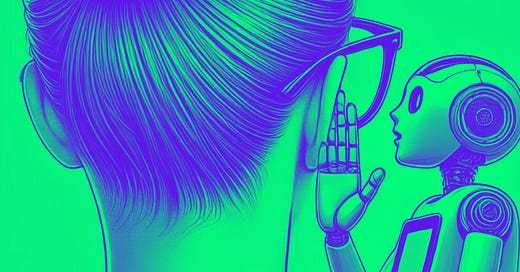LoveFrom
Excuse my glazing, but I’ve always admired the beauty of Apple products (let’s not bring up the magic mouse). I used to run to the Apple section of Best Buy anytime my dad would take me. While the latest iteration of the iPhone is just a slightly different twin of the previous model, enough to tell them apart, you have to admit it’s nice to look at. The company’s attention to design is obviously thanks to Steve Jobs, but the execution of its modern products? That was Jony Ive. Ive was head of industrial design and was responsible for designing many iconic Apple products, including the iPhone, iPad, and MacBook.
What makes luxury products so elegant and refined are their attention to detail. I can’t remember the last time I baked, but the temptation I feel to splurge on the new KitchenAid Evergreen Stand Mixer is almost sinful. That’s the power of design; but in the age of software, we’ve lost our sense of wonder for tech gadgets. We’ve tried slapping a screen on every appliance from the fridge to the elf bar in the name of innovation, but it’s all the same.
However, we’re at the dawn of a new age — the age of AI. While the first couple of attempts at AI hardware have nearly failed, thanks Marques Brownlee, the day of AI’s “iPhone” moment is coming. And of course, Ive is working on something with our nonprofit king, Sam Altman:
At a Michelin-starred restaurant, Spruce, a few miles from Jackson Square, Mr. Altman and Mr. Ive talked about how generative A.I. made it possible to create a new computing device because the technology could do more for users than traditional software since it could summarize and prioritize messages, identify and name objects like plants and eventually field complex requests like booking travel. — NYT
Brainstorming
Not much is known about what this device will look like, but the goal is to make a product ”that uses A.I. to create a computing experience that is less socially disruptive than the iPhone Oh, the irony.
The initial catalog of products has all focused on this mission. Humane’s AI Pin sticks to your shirt and aims to act like a little assistant. Fitted with a small camera and a speaker, you simply tap the pin and ask for what you want. It’s an interesting piece of hardware, but it just doesn’t work as well as you want it to. Next, we have the the Rabbit R1, which is a little square with a screen and a Spotify connection. It’s a bit more tacky and meant to be held instead of pinned. But again, interesting piece of hardware that doesn’t work well. Finally, there’s the glasses. This seems to be where a lot of the products are headed with SnapChat’s Spectacles, Brilliant Lab’s smart glasses, and Meta’s smart Ray-Ban’s.
Everyone has been raving about Meta’s iPhone moment this week at Meta Connect, where the Zuck unveiled Orion, Meta’s first pair of AR sunglasses. While it won’t be available to purchase, it’s a peak at what is coming for the next couple of years in terms of smart glasses technology. The idea is exciting, a wearable Apple vision pro, but how is it less disruptive? Instead, you have the best of an AI wearable, combined with screens right on your face. At least when I’m in public, the person can see me pull out my phone. Now they won’t be able to tell if I’m even paying attention while looking right at them. Also, I’ll have to deal with people I’m talking to myself.
Most people agree that phones have become socially disruptive, but few are jumping out of their seats for any of these products. Part of it has to do with the fact that we are still very early in the AI space. As I’ve previously said, Apple Intelligence will be one of the first attempts at mainstream adoption, so the thought of buying one of these gadgets is still way below the wish list. The other part is that a lot of AI has felt quite forced. It came to market with ChatGPT only a couple of years ago and yet we’re constantly inundated with headlines of jobs lost and how this will be the future. Yes, that’s true, but the fact that businesses have more of an appetite for this new technology than the consumer is very telling. How do you sell something to the public after you’ve already scared them away from it?
I’m just waiting for the little gadget from Dune:
Thank you
Johnny Ive, save us. As always, if you have any questions, want more explanations, or strongly disagree, comment below, follow me on Twitter (X), follow me on Instagram, or shoot me an email.
Disclaimer: These views are my own, and do not necessarily reflect the views of any organization with which I am affiliated with. This article is written with AI assistance.





